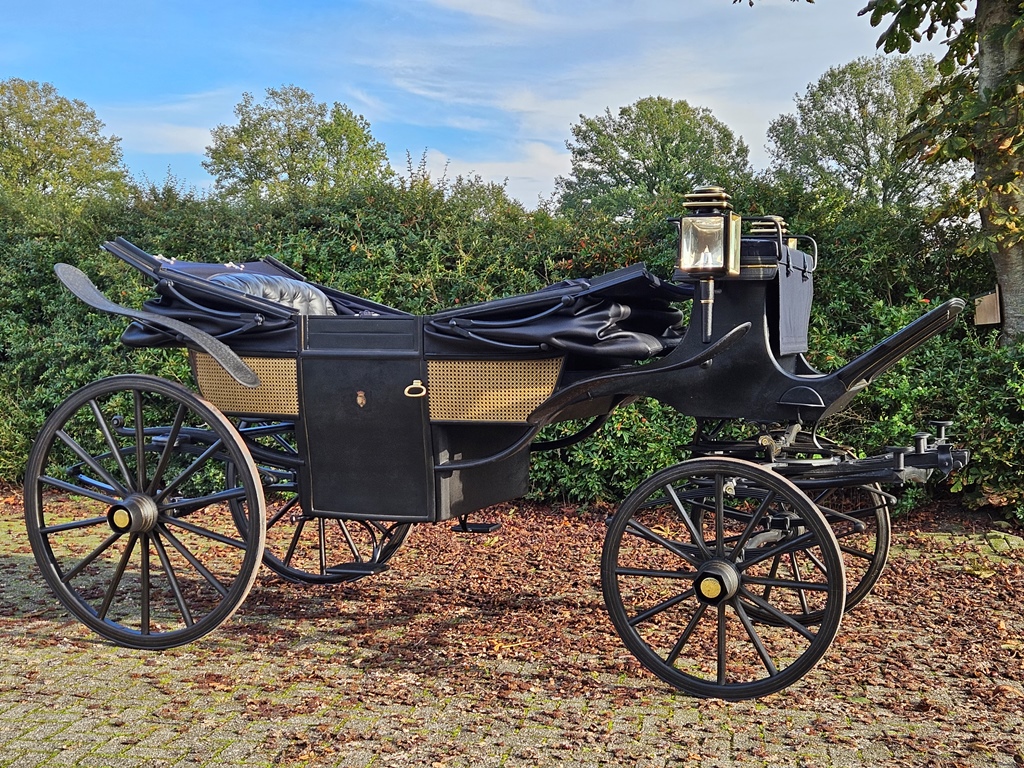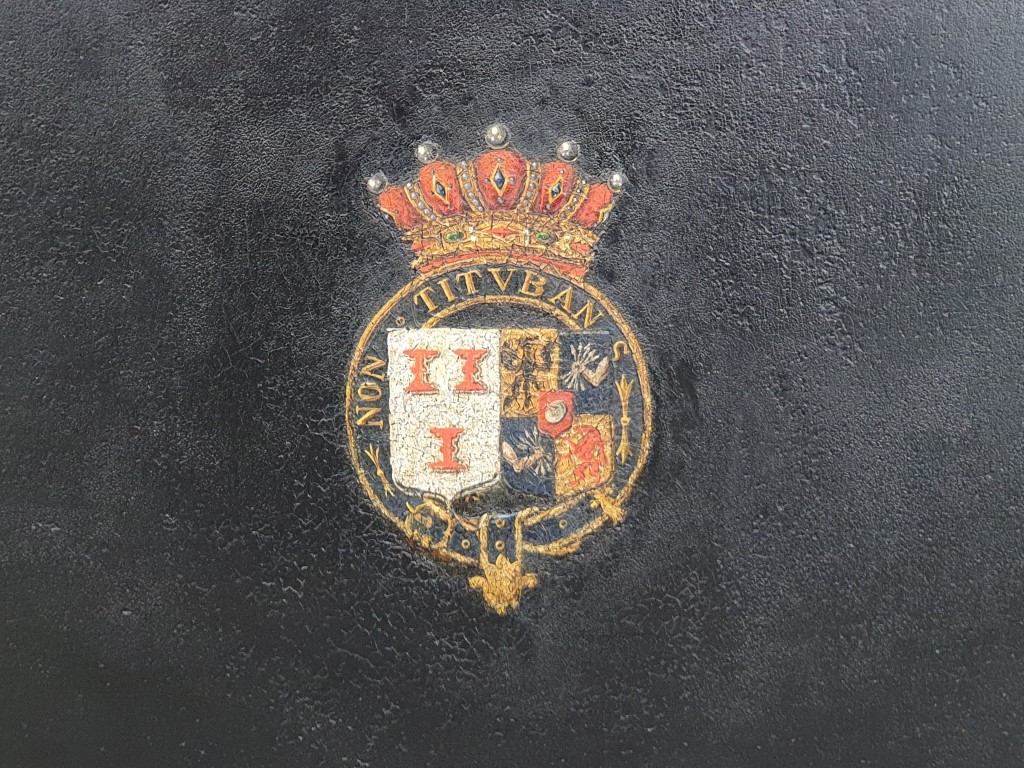Fifth restored top piece returned to carriage house
Landauer of Castle de Haar restored
Half a year was planned for it, it turned out to be just under two years: the restoration of the landau took longer than expected. But...it is finished! Of the five carriages of Castle de Haar that have been restored, the work on the landau proved to be by far the most complicated. Broken roof trusses, eaten away by mice and moths, a door hanging at half past six, lamps broken and stuck, springs sagging, the list of defects was endless, making one of Holland's most beautiful carriages no longer presentable for the public. This will change, now that the carriage is ready for transport to the Utrecht castle, where next year everyone can come and admire it in the stable complex.

History
The landau is so close to the end of the 19e century built at the prestigious Million & Guiet factory in Paris for the couple Étienne Baron van Zuylen van Nyevelt van de Haar and Hélène Baroness de Rothschild. A special feature of the carriage is its design, in which the case is openwork (ajour) and on the panels braided rattan is incorporated, the so-called canework.
Fun fact: such a landau cost in 1890 new about Dfl. 3,000,-, the coachman who drove it had, with an annual salary of Dfl. 500,- one of the best paid positions at Castle de Haar.
Monk's Work
Restorer Maria Stolk: "Of course we knew in advance that this carriage would be a large and complex job, because the entire carriage, but especially the canework was covered with a thick layer of brown varnish. And this layer of varnish also turned out to be very difficult to dissolve. It soon turned out to be a monk's work, where you just don't count your hours.' A full "man-year" of hours was planned for the budget, and with several specialists taking on parts of the restoration, six months would have been a reasonable estimate. This is also how much time, on average, the four previous restorations of carriages for Castle de Haar took. But it turned out differently in this case. A lot of patience was required from everyone, especially from the client. Maria Stolk did not fall into the trap of rushing off and stoically continued cleaning inch by inch with a cotton swab, with the result that the rare canework has remained undamaged and clean. The tally stands at 15,180 cotton swabs - recyclable - that passed through her hand for this job.


Making two missing cushions inside also proved no mean feat. 'I spent an entire day looking in an attic at a leather wholesaler and among the large racks with tall stacks of leather I found, after much deliberation, eight skins of goatskin that best matched the original saffian leather upholstery in color and grain. At the Stief company in Augsburg, Germany, we found six meters of blue passement in the old stock. And so it still became possible to make two cushions that, while not 100% exact copies, still complement the missing part of the authentic interior well and do not interfere. It is perhaps the last time we could do something like this, because Stief has stopped worldwide there are no other suppliers for such fine carriage fittings to be found. Not even of, for example, the tassels for the window blinds or a tassel for the roller blind, which were missing in the landau of Castle de Haar. These are supposed to be made of silk and not wool. Fortunately Jan Zijlstra, the curator of the National Carriage Museum, conjured up three old tassels from the museum depot in Leek.
This carriage comes out of the management of Borg and Nationaal Rijtuigmuseum Nienoord and is transferred to long-term loan by Kasteel De Haar. This project has been made possible by VZW Pater David, Prins Bernhard Cultuurfonds, Mondriaan Fonds, Dinamo Fonds and Stichting kasteel de Haar. The Hippomobile Heritage Foundation is supervising the implementation and providing communication.
